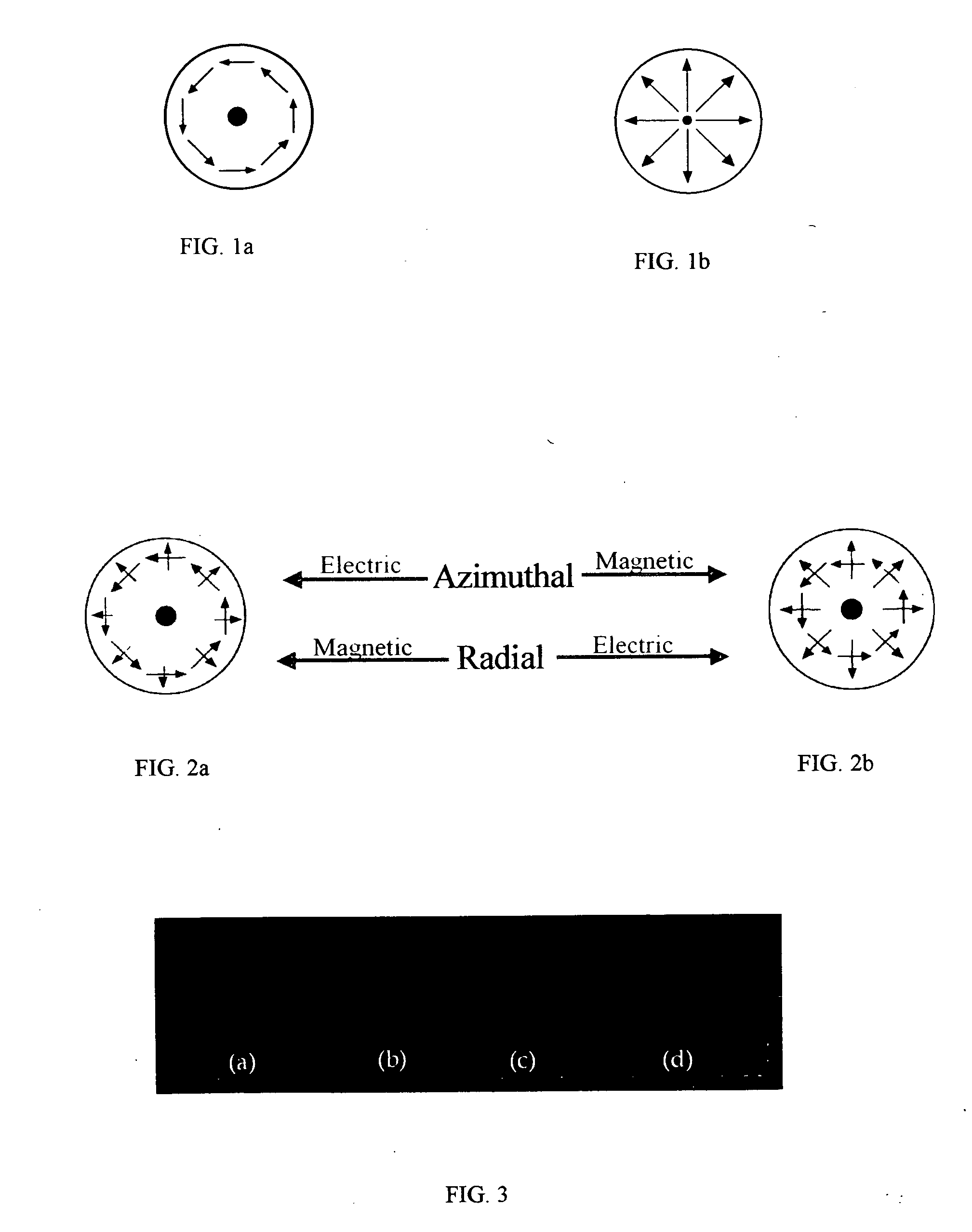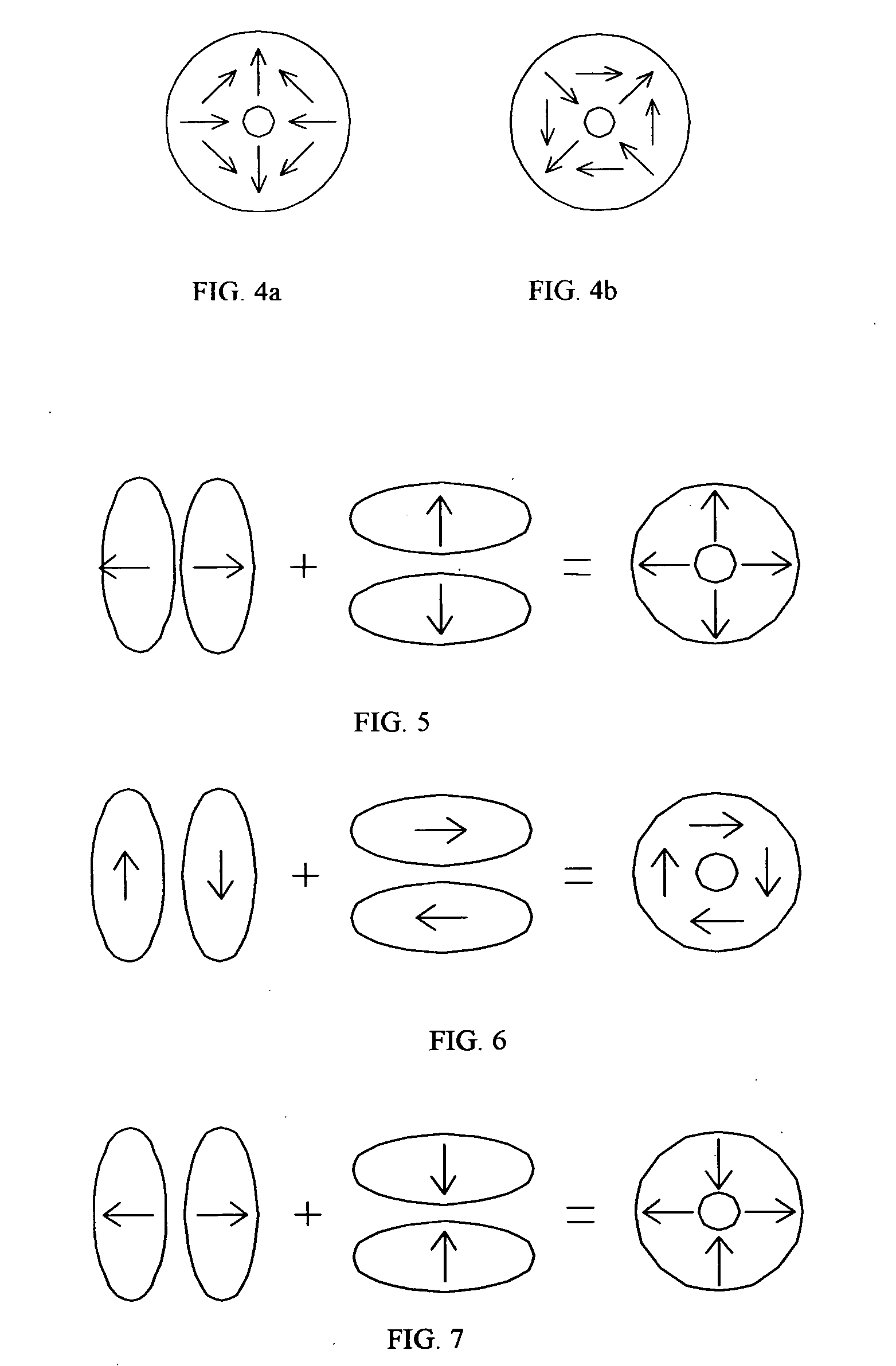Space-variant waveplate for polarization conversion, methods and applications
a spacevariant wave and polarization conversion technology, applied in the field of polarized light, can solve the problems of inhomogeneous polarized light not being considered for use in many applications, null on-axis, and difficult control of which of the many possible azimuthal modes will be emitted
- Summary
- Abstract
- Description
- Claims
- Application Information
AI Technical Summary
Benefits of technology
Problems solved by technology
Method used
Image
Examples
Embodiment Construction
[0066] When possible, like reference numerals will be used to describe like parts among the various embodiments of the invention, with reference to the figures.
[0067] An embodiment of the invention is directed to a polarization converter that converts spatially homogeneously polarized light into spatially inhomogeneously polarized light having a fast axis orientation that varies in a smooth and continuous manner over a pupil aperture of the device upon propagation through the device.
[0068]FIG. 10 illustrates a polarization converter 100-1 according to an exemplary embodiment of the invention. The polarization converter 100-1 includes an optically transparent window 120 having a clear aperture 121 defined by opposing, polished faces 123, 125 and a periphery 127 (FIG. 11). In an exemplary aspect, the window 120 is cylindrical, having a diameter, ΦG, equal to 0.5 inches and a thickness, Th, equal to 0.375 inches. The exemplary window 120 is BK7 glass. Fused silica is an alternative w...
PUM
 Login to View More
Login to View More Abstract
Description
Claims
Application Information
 Login to View More
Login to View More - R&D
- Intellectual Property
- Life Sciences
- Materials
- Tech Scout
- Unparalleled Data Quality
- Higher Quality Content
- 60% Fewer Hallucinations
Browse by: Latest US Patents, China's latest patents, Technical Efficacy Thesaurus, Application Domain, Technology Topic, Popular Technical Reports.
© 2025 PatSnap. All rights reserved.Legal|Privacy policy|Modern Slavery Act Transparency Statement|Sitemap|About US| Contact US: help@patsnap.com



